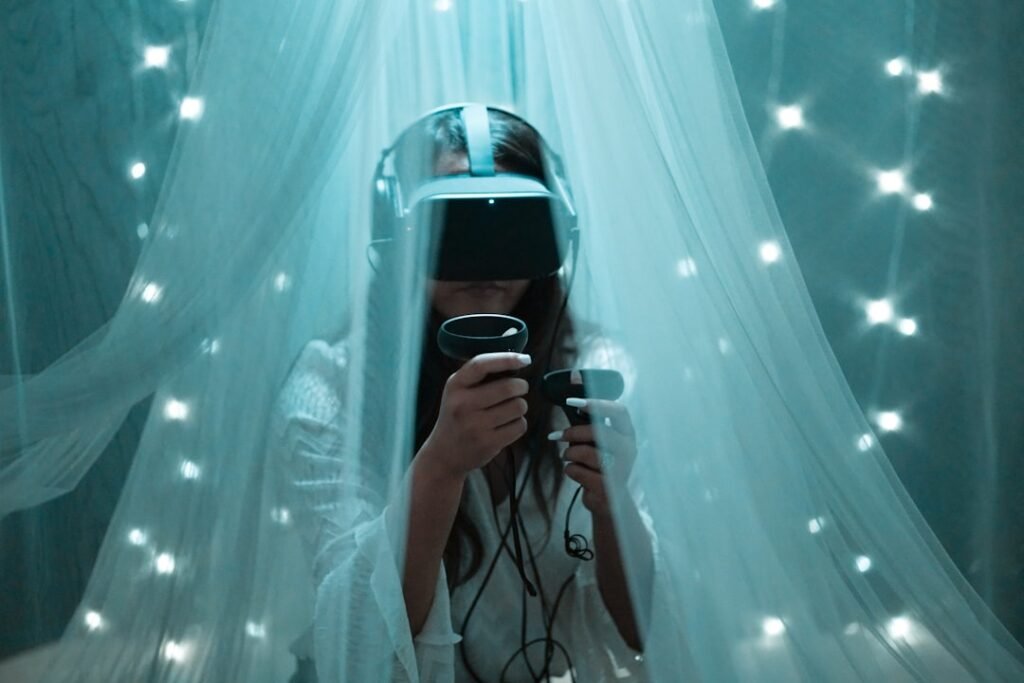Now Reading: The Return of Monochrome: The Resurgence of Black-and-White Art Styles
-
01
The Return of Monochrome: The Resurgence of Black-and-White Art Styles
The Return of Monochrome: The Resurgence of Black-and-White Art Styles

As I delve into the history of monochrome art, I find myself captivated by its rich and varied origins. Monochrome art, characterized by its use of a single color or shades of a single hue, has roots that stretch back to ancient civilizations. The earliest examples can be traced to the cave paintings of prehistoric humans, where simple black and white pigments were used to depict their surroundings.
These early artists relied on the stark contrast of black charcoal and white minerals to create images that conveyed their experiences and emotions. This primitive form of expression laid the groundwork for what would evolve into a more sophisticated exploration of monochrome in later artistic movements. Fast forward to the 20th century, and I see how monochrome art began to take on new meanings and forms.
The rise of modernism brought with it a fascination with abstraction and minimalism, leading artists like Kazimir Malevich and his iconic “Black Square” to challenge traditional notions of representation. Malevich’s work was revolutionary, as it stripped away the complexities of color and form, inviting viewers to engage with the essence of art itself. This period marked a significant turning point, as monochrome art transitioned from mere representation to a profound exploration of perception and reality.
Key Takeaways
- Monochrome art has a rich history dating back to ancient civilizations, with early examples found in cave paintings and ancient pottery.
- The rise of color photography and digital art led to a decline in popularity for monochrome art styles, but they are now experiencing a resurgence in the modern art world.
- Technology has played a significant role in the evolution of black-and-white art, from the use of film in photography to the digital manipulation of images.
- The simplicity and timeless appeal of black-and-white art styles are attracting a new generation of artists and art enthusiasts.
- The use of contrast in black-and-white art can evoke powerful emotions and create striking visual impact in a way that color art cannot.
The Rise of Color: How Monochrome Art Styles Faded into the Background
The Rise of Abstract Expressionism
The post-war era saw artists like Jackson Pollock and Mark Rothko embracing color as a means of emotional expression, leading to the rise of Abstract Expressionism. This movement celebrated the dynamic interplay of hues, allowing artists to convey complex feelings through their work.
A Shift in Artistic Possibilities
In this colorful landscape, monochrome art seemed to fade into the background, relegated to a niche that few dared to explore. However, I recognize that this shift was not merely a rejection of monochrome but rather an expansion of artistic possibilities. The introduction of new materials and techniques allowed artists to experiment with color in ways previously unimaginable.
A Longing for Simplicity
Yet, as I ponder this vibrant era, I also sense a longing for simplicity—a desire to return to the stark contrasts that monochrome art offers. While color dominated the scene, monochrome art quietly persisted in the shadows, waiting for its moment to re-emerge.
The Influence of Technology on Black-and-White Art: From Film to Digital

In my exploration of monochrome art, I cannot overlook the profound impact that technology has had on its evolution. The advent of photography in the 19th century marked a significant turning point for black-and-white art. Early photographers like Ansel Adams harnessed the power of black-and-white film to capture stunning landscapes and intricate details with remarkable clarity.
The limitations of film forced photographers to master the art of contrast, light, and shadow, resulting in breathtaking images that continue to resonate with audiences today. As technology advanced, I witnessed the transition from film to digital photography, which brought both challenges and opportunities for black-and-white art. Digital tools allowed for greater manipulation and experimentation, enabling artists to create striking monochrome images with ease.
However, I also recognize that this shift led to a saturation of color in contemporary photography, as vibrant hues became more accessible than ever before. Yet, amidst this colorful chaos, I find solace in the timeless beauty of black-and-white photography—a reminder that simplicity can evoke powerful emotions.
The Appeal of Simplicity: Why Black-and-White Art Styles are Making a Comeback
In recent years, I’ve noticed a resurgence of interest in black-and-white art styles, and I can’t help but feel excited about this trend. In a world increasingly dominated by noise and complexity, there is something profoundly appealing about the simplicity of monochrome art. It invites viewers to focus on form, texture, and composition without the distraction of color.
This minimalist approach allows for a deeper engagement with the artwork, encouraging me to contemplate its meaning on a more profound level. Moreover, I believe that the current cultural climate has played a significant role in this revival. As we navigate an era marked by uncertainty and chaos, many individuals are seeking solace in simplicity and clarity.
Monochrome art offers a refuge from the overwhelming barrage of information and stimuli that characterize modern life. It serves as a reminder that beauty can be found in restraint and that sometimes less truly is more.
The Role of Contrast: Exploring the Power of Black and White in Art
As I delve deeper into monochrome art, I am continually struck by the power of contrast inherent in black-and-white compositions. The interplay between light and shadow creates a dynamic tension that draws me in and compels me to explore the nuances within each piece. This contrast not only enhances visual interest but also evokes emotional responses that color often cannot achieve.
In black-and-white art, every shade carries weight; every gradient tells a story. I find that this emphasis on contrast allows artists to convey complex themes and emotions with remarkable clarity. For instance, in the works of artists like Henri Cartier-Bresson, the stark contrasts between light and dark serve to highlight human experiences—joy, sorrow, tension—capturing fleeting moments that resonate deeply with viewers.
In my own appreciation for monochrome art, I have come to understand that it is not merely about the absence of color; it is about harnessing the power of contrast to create meaning and provoke thought.
The Modern Reinterpretation of Monochrome: How Artists are Putting a Contemporary Spin on Black-and-White Art

As I observe contemporary artists reinterpreting monochrome styles, I am inspired by their innovative approaches. Many are pushing the boundaries of traditional black-and-white art by incorporating mixed media, digital techniques, and even performance elements into their work. This fusion of old and new creates a fresh perspective on monochrome art that resonates with today’s audiences.
Artists like Olafur Eliasson have explored light and shadow in immersive installations that challenge our perceptions while remaining rooted in monochromatic principles. Additionally, I see how social media platforms have provided artists with new avenues for sharing their work. The immediacy of digital platforms allows for rapid experimentation and feedback, fostering a vibrant community where monochrome art can thrive.
As I scroll through my feed, I am often captivated by striking black-and-white images that challenge conventions and invite dialogue. This modern reinterpretation breathes new life into monochrome art, proving that it remains relevant in an ever-evolving artistic landscape.
The Impact of Black-and-White Art in Contemporary Culture: From Fashion to Interior Design
In my exploration of contemporary culture, I have come to appreciate how black-and-white art has permeated various aspects of our lives—from fashion to interior design. The timeless elegance of monochrome aesthetics has made it a popular choice among designers seeking to create sophisticated yet minimalist spaces. In my own home, I find that incorporating black-and-white artwork adds a touch of refinement while allowing other elements to shine.
Fashion designers have also embraced monochrome palettes as a means of making bold statements. Iconic brands often utilize black-and-white designs to convey a sense of modernity and sophistication. As I browse through fashion magazines or attend runway shows, I am consistently drawn to collections that feature striking monochromatic ensembles—there’s something undeniably chic about the simplicity and versatility they offer.
The Psychology of Monochrome: Understanding the Emotional and Psychological Effects of Black-and-White Art
As I delve into the psychology behind monochrome art, I am fascinated by its emotional resonance. Studies have shown that black-and-white imagery can evoke feelings ranging from nostalgia to introspection. The absence of color allows viewers like me to project our own emotions onto the artwork, creating a personal connection that transcends visual representation.
In moments when I feel overwhelmed or distracted by vibrant colors, I often turn to black-and-white art for its calming effect. Moreover, I recognize that monochrome art can serve as a powerful tool for self-reflection. The stark contrasts inherent in these works encourage me to confront my own thoughts and feelings without distraction.
In this way, black-and-white art becomes not just an aesthetic choice but also a means of exploring my inner landscape—a journey toward understanding myself more deeply.
The Intersection of Black-and-White Art and Social Justice: How Artists are Using Monochrome to Make a Statement
In recent years, I’ve observed how artists are harnessing the power of monochrome art to address pressing social issues. By stripping away color, they draw attention to themes such as inequality, injustice, and human rights violations in stark relief. Artists like Ai Weiwei have utilized black-and-white imagery to convey powerful messages about freedom and oppression—reminding us that art can be a catalyst for change.
This intersection between monochrome art and social justice resonates deeply with me as it highlights the potential for creativity to inspire action. In an age where visual communication is paramount, artists are using their platforms to raise awareness about critical issues through compelling black-and-white compositions. As I engage with these works, I am reminded that art is not just an aesthetic pursuit; it is also a means of advocating for change and amplifying marginalized voices.
The Future of Monochrome Art: Predictions for the Evolution of Black-and-White Art Styles
Looking ahead, I find myself pondering the future trajectory of monochrome art styles. As technology continues to evolve at an unprecedented pace, I anticipate that artists will explore new mediums and techniques that challenge traditional notions of black-and-white representation. Virtual reality and augmented reality may offer exciting opportunities for immersive experiences that engage viewers in ways we have yet to imagine.
Moreover, as societal conversations around identity and representation continue to evolve, I believe we will see more diverse voices contributing to the dialogue surrounding monochrome art. Artists from various backgrounds will bring their unique perspectives to this timeless medium, enriching its narrative and expanding its reach within contemporary culture.
Embracing Monochrome: Tips for Incorporating Black-and-White Art into Your Life
As someone who appreciates the beauty and simplicity of monochrome art, I’ve discovered several ways to incorporate it into my life meaningfully. One approach is curating a personal collection of black-and-white photographs or prints that resonate with me emotionally. Whether it’s classic works from renowned photographers or contemporary pieces from emerging artists, surrounding myself with these images creates an atmosphere that inspires reflection.
Additionally, I’ve found that integrating monochrome elements into my home decor can enhance my living space’s overall aesthetic. From statement wall art to subtle accents like cushions or throws featuring black-and-white patterns, these choices allow me to create an environment that feels cohesive yet dynamic. In conclusion, my journey through the world of monochrome art has revealed its enduring significance across history and culture.
From its origins in ancient expressionism to its modern reinterpretations in contemporary society, black-and-white art continues to captivate me with its power and simplicity. As I embrace this timeless medium in my own life, I am reminded that sometimes it is within the absence of color that we find our most profound connections—both with ourselves and with the world around us.
If you’re interested in the resurgence of classic gaming trends, you may also enjoy reading about the top retro games on Switch Online. This article explores the nostalgia and excitement surrounding classic video games making a comeback on modern consoles. It’s a great companion piece to the discussion on the return of black-and-white art styles in gaming.



























